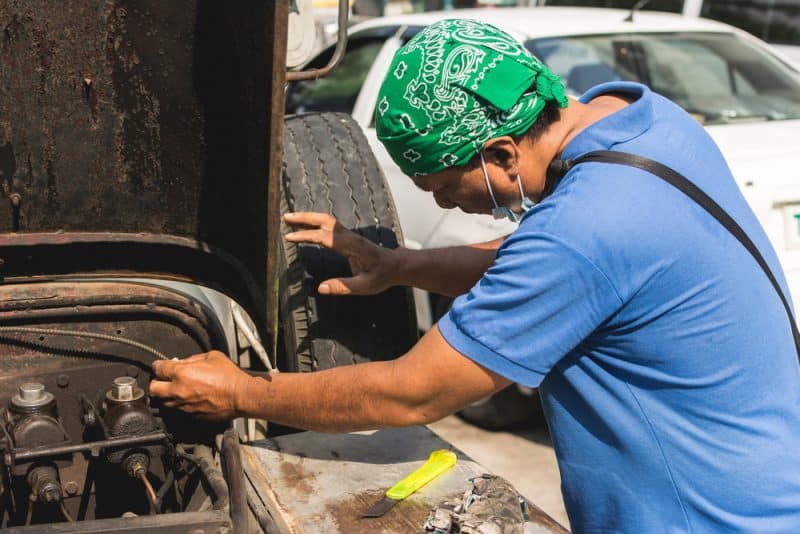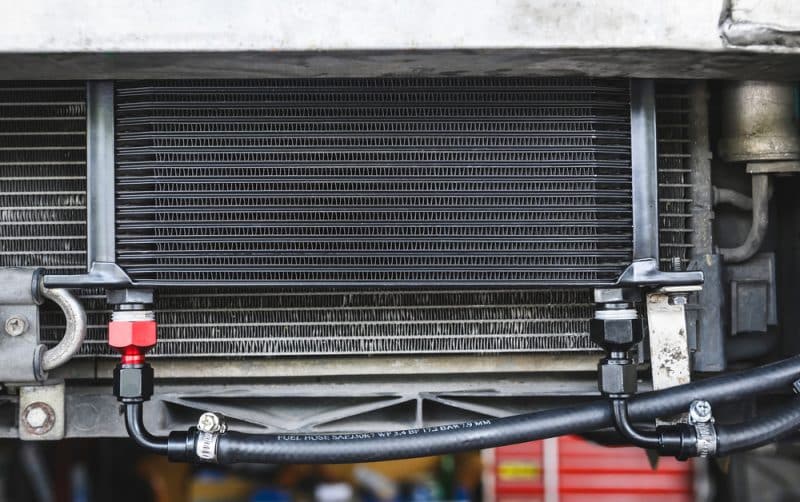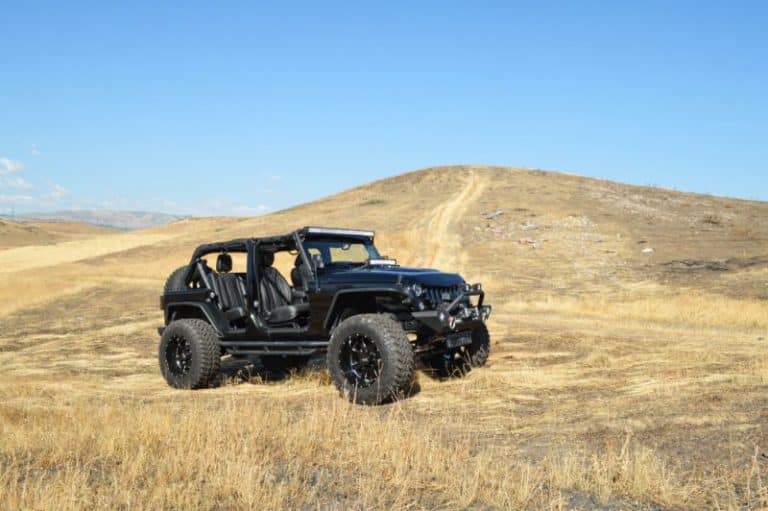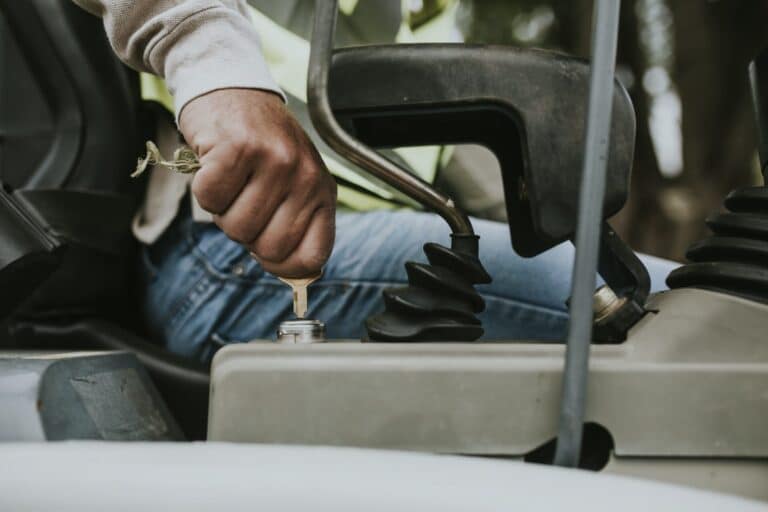How Do I Know If My Jeep Oil Cooler Is Bad? (Let’s See)
Like many other car components, the oil cooler system in your automobile is vital as it helps keep your engine firm as you drive on the road.
It’s also essential to have your oil cooling system working perfectly in any weather conditions.
Further, knowing when your Jeep oil cooling system is bad and replacing it is very important. Doing this helps prolong the lifespan of your automobile and engine.
Neglecting it can lead to harm and end up costing you much. So, how can you tell if your Jeep oil cooler is bad?
When oil starts leaking away from your cooling system, it’s evident that your cooler is bad or has developed a fault. The work of the cooler is to remove excess heat from the oil, but when the cooler is bad, the oil itself begins to spill out. Other indications are vibration from the combustion chamber and black exhaust smoke.
What Are the Common Symptoms of a Failing Oil Cooler?

The oil cooler in your car will eventually fail, as will all mechanical equipment. The time it takes to fail varies in several circumstances, but it will eventually do so.
As a result, it will eventually need replacement. However, a bad oil cooler will always alert you that it is defective.
An oil cooler will exhibit the following signs and symptoms when it is malfunctioning:
#1. Leakage in Oil
An adapter connects the oil lines to the oil cooler. If the adapter breaks, the oil may spill from the cooler and the engine.
The extent of the leak determines the amount of oil that spills. For example, minor leaks may produce small pools of oil, whereas large leaks may provide a constant stream.
The presence of lubricant in a vehicle’s oil cooling system is another sign that the oil cooler is malfunctioning.
When the engine is running, oil seeps into the cooling system because the oil pressure is greater than the pressure in the cooling system.
That could lead to engine damage due to insufficient lubrication of the engine parts.
If the oil cooler is leaking, it will raise the engine’s temperature, which will harm the engine’s performance and service life. If you have an oil cooler leak, you should call a professional to fix it.
#2. Leakage in the Coolant
When the oil cooler fails externally, coolant might escape from the engine.
Depending on how much coolant is leaking, you could see a puddle or a constant coolant stream under the car.
Engine overheating can result from a coolant leak from a malfunctioning oil cooler. Consult a specialist to determine the source of the issue and implement a solution.
#3. Reduction in Engine Performance
Having a blocked oil cooler might cause a decrease in engine performance. Due to a reduction in cooling oil flow and volume, the vehicle’s engine temperature will rise.
As a result, engine performance can suffer, such as decreased acceleration.
#4. Black Smoke From the Exhaust
If your oil cooler fails, your engine will spill oil into the engine cylinders. As a result of the oil in the chambers, foul-smelling black smoke emits from the car’s exhaust pipe.
If you see this, turn off the engine as quickly as possible to prevent damage to engine components.
#5. Vibration From the Combustion Chambers
In addition to producing black smoke, a clogged oil cooler can produce vibration in the combustion chambers. Explosions in the car’s numerous cylinders are responsible for the trembling.
If you don’t get a skilled mechanic to check at the problem right once, the vibrations could cause harm to other parts of your vehicle.
#6. Swell in Radiators
It is easy to see an oil cooler problem by looking at your radiator, which will likely swell. In addition, it is possible to detect broken hoses in the oil radiator, affecting the engine performance.
You can then discover this by physically examining your vehicle’s engine.
#7. Oil Mixed With the Coolant
You can maintain temperatures by using a coolant in tube or shell oil coolers. No contact between coolant and oil occurs in an oil cooler performing properly.
However, coolant from the cooling system might be forced into the oil pan when an oil cooler malfunctions.
Without immediate attention, a coolant-in-oil scenario develops that risks engine damage and eventual shutdown.
Some of these symptoms may indicate other issues with your automobile, but if you notice any of these signals, there is almost always an issue with your oil cooler.
What Happens if the Oil Cooler Is Bad?
The cooling system may become contaminated if the oil cooler adapter fails internally. Read more to know whether My Jeep Shocks Are Bad or not?
When the engine starts, the oil pressure is higher than the cooling system pressure, resulting in a lack of lubrication.
A lack of lubrication can lead to severe engine damage if not addressed.
Oil coolers increase the engine’s lifespan while decreasing the risk of overheating in high-performance vehicles.
In the case of long-distance trailer hauling, for example, your engine is likely to be working at full capacity for a long time.
That generates a great deal of heat, which necessitates a means of dissipation.
Using oil coolers prevents your engine from overheating when you need the most protection from the elements. Keep an eye on your engine’s condition if it’s running extra hard.
You can prevent engine overheating by using cooler oil and keeping the oil in better condition.
How Do You Test an Oil Cooler?
Oil cooler elements should be pressure tested in conjunction with oil cooler seals if there has been a mixture of oil and water in your vehicle.
Simply take the oil cooler part into a radiator shop and have it pressure treated there instead of building a test rig.
The following is a list of factory instructions for examining the oil cooler element’s pressure.
- You should cover one of the oil cooler nozzles with a dust cap with a clamp attached.
- A 1-inch hose and adapters are needed to connect an air supply to another oil cooler nozzle.
- In a tank of water, submerge the oil cooler.
- Compress the oil cooler to around 0.8 bar with compressed air (12 psi). Air bubbles rising out from the oil cooler signify that something is amiss.
- Replace the cooler component if bubbles are present.
Can I Drive With a Bad Oil Cooler?

It is possible to drive without an oil cooler, although I will not recommend this. What you plan to do with the vehicle is entirely up to you.
Oil coolers aren’t necessary if you only use your car to get to work and don’t abuse it.
However, it is a feature to consider if you live and drive in a hot region.
Also, when racing, the engine is put through greater strain than usual, necessitating the installation of additional cooling.
High-performance cars, especially track racers and rally cars, rely heavily on oil cooling to keep their fluids cold during high-velocity, flat-out driving conditions.
The engine oil cooler is not present in most automobiles, but the transmission cooler may be.
A transmitting cooler, or transfer oil cooler, is sometimes confused for an oil cooler, but they are distinct components.
Still, many automobiles don’t have an engine oil cooler. This is because the oil in most engines is typically cooled by airflow.
So the engine oil cooler is not present in most automobiles, but the transmission cooler may be.
Conclusion
We discussed the importance of having a good oil cooler system present in your automobile.
This article also points out the damages that could occur to a vehicle if it has a faulty cooling system.
Therefore, I recommend maintaining your cooling system just like you do other components.
Doing this helps curb overheating in your vehicle and has many more advantages.





